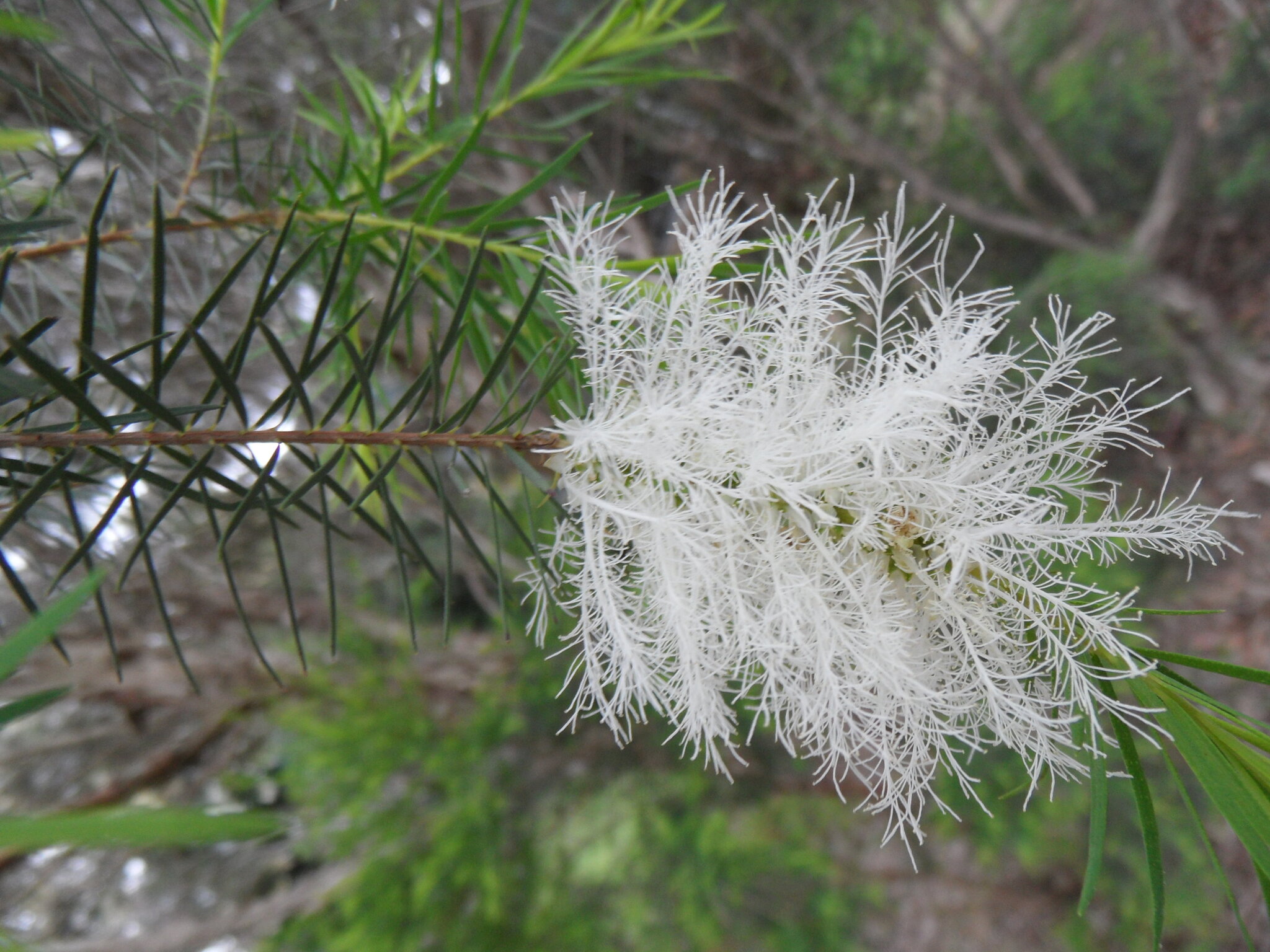
A round tree up to 10 m tall with a short trunk covered with thick, spongy, white, papery bark. Leaves mostly opposite, linear-lanceolate, 1-3-veined, concave, 1.5-2.5 cm long, 2-3 mm wide; stalk absent or to 2 mm long. Flowers creamy white, of the bottlebrush type with individual flowers in 2s or 3s, smelling slightly of honey; early summer. Stamen bases 8-15 mm long. Fruits with valves not protruding.
NSW, Qld, SA, NT.
VIC: Balwyn (Maranoa Gds); Burnley (College grounds); Melbourne (Royal Bot. Gds, near path by Perennial Border).
This species is very similar to four others that are rarer in cultivation. M. alternifolia (Maiden &Betche) Cheel, the source of Tea Tree Oil, has narrow leaves mostly about 1 mm wide scattered or whorled. M. trichostachya Lindl. has fruit with protruding valves and stamen bases (claws) 4-8 mm long (not 8-15 as in M. linariifolia) and has the cultivar 'Snowflake' which is incorrectly applied to M. linariifolia. M. decora (Salisb.) Britten, from Qld and NSW has shortly stalked leaves and stamen bases 2-3.5 mm long. A large old specimen can be seen near the Fern Gully at the Royal Bot. Gds, Melbourne, planted during Mueller's directorship and illustrated in William Guilfoyle's 1911 Australian Plants. M. rhaphiophylla Schauer, Swamp Paperbark (Needle-leaved Honey-myrtle), from WA and SA is a small tree to 10 m tall with papery bark and alternate, slightly hooked, cylindrical to slightly flattened, needle-like leaves.
Source: (2002). Myrtaceae. In: . Horticultural Flora of South-eastern Australia. Volume 3. Flowering plants. Dicotyledons. Part 2. The identification of garden and cultivated plants. University of New South Wales Press.
